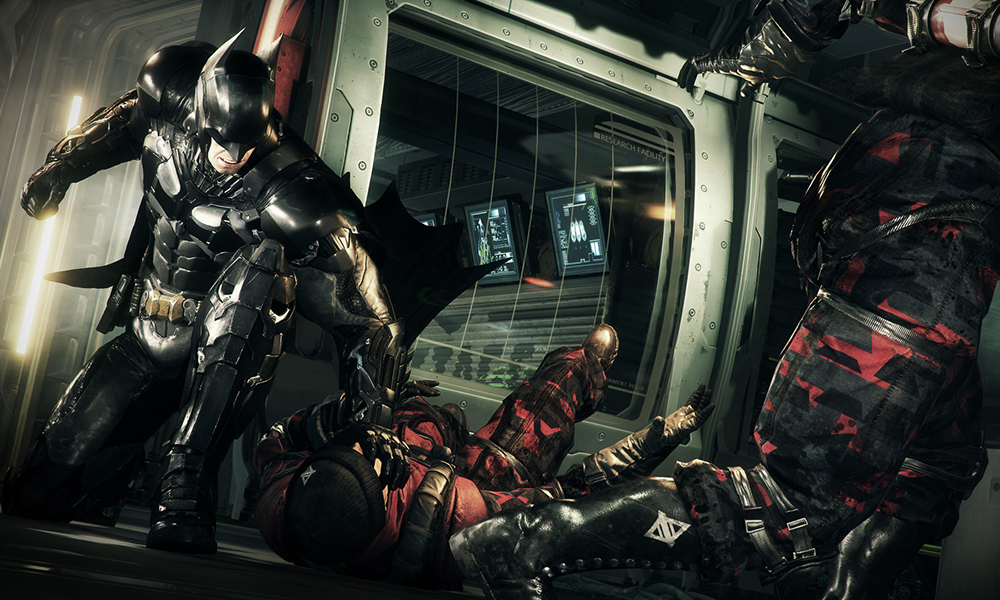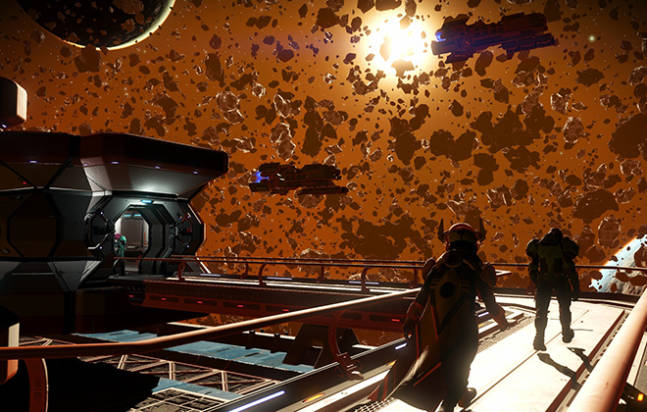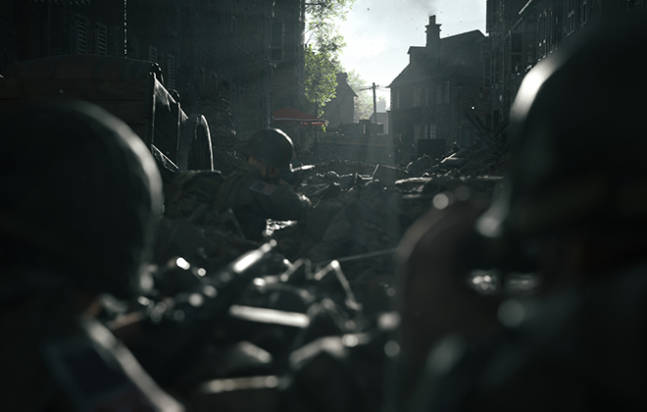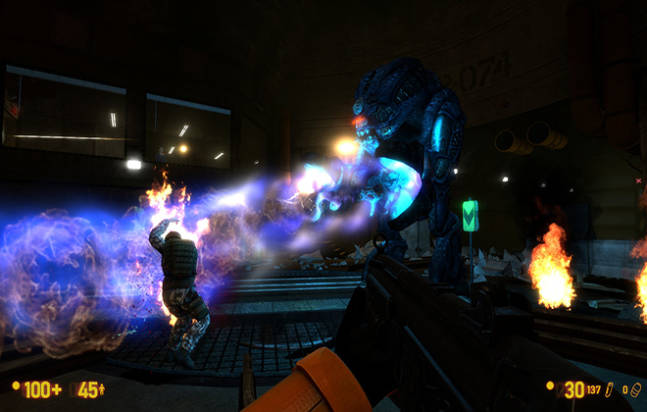These days, it’s not uncommon for video game developers to continue working on a game after it’s been released. Sometimes that means developers are putting new coats of polish on a real turd of a game. I don’t really care too much about those. What I like more is when an indie developer gets to continue to work on their idea to make it the best it can be, or when someone is twisting the wreckage of a disastrous release back into what the game should be. Those are the uplifting stories I like.
Maybe you’ve played some of the games below before but it’s been awhile, or maybe you’re yet to pick them up. Regardless, there’s never been a better time than now thanks to recent updates.
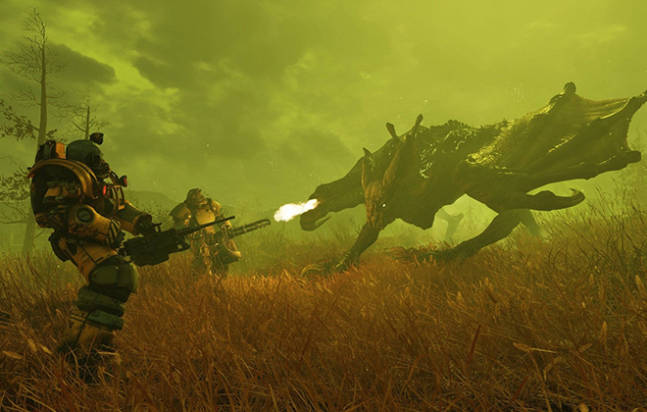
Fallout 76
My siblings and I are huge fans of the Fallout franchise. We were too young to fully get in on the original and its sequel, but we’ve been spent far more time in post-apocalyptic Washington D.C., Nevada, and Boston than is healthy. Three Dog’s radio announcements have fully and unironically entered our everyday vernacular. The promise of a new game had us scouring the internet for details and trailers, sending links to each other in our group chat. We loved that there was going to be a Fallout game we could play with each other, bouncing our own unique play styles off each other instead of just comparing game recaps or swapping individual stories.
Fallout 76’s release ended up being a real challenge to that loyalty. Too many horror stories of a glitchy, buggy, vapid feeling West Virginia sent us back to our earlier haunts, preferring not to dilute our fond Fallout memories with struggling through an unfinished mess. Even now, traces of that early, scant game exist. There’s a clear distinction between 2018’s release content and what’s come out in the subsequent updates. The release stuff all revolves around dealing with repetitive robots, finding in-game notes, and wading through repetitive daily quests and timed events. None of it is satisfying beyond making a bunch of numbers and all of it gets mind-numbingly boring.
There were a few updates in 2019, but the game wasn’t worth playing until 2020’s Wastelanders update. That brought fully human characters back into the world and most of the worthwhile quests and events revolve around interacting with actual human life, which, unsurprisingly, was one of the strong points of the previous games too. Now, the game has actual depth with engaging quests, genuinely interesting characters, and rewarding exploration. I’d say it’s still not quite as developed as previous Fallout games, but it’s at least finally worth a fan’s time.
No Man’s Sky
I wrote about No Man’s Sky when it first came out in 2016, with the conclusion that the game was ambitious but likely only worthwhile for people who enjoy open ended exploration. I don’t think I talked about it in the original article, mostly because I didn’t have the space with the word count, but I also felt that the game has under delivered on a lot of huge promises. Hello Games, the developer, deserved some slack for that, since they were an indie operation with limited resources, but Sean Murray, one of the founders, doubled, tripled, and quadrupled down on the game’s limitless possibilities and seemingly had the gameplay footage to back it up. As a result, most people felt like I did at the release. The game was enjoyable as it was, but couldn’t live up to its own hype.
There have been 23 major updates to the game in the intervening six years, giving us a game that looks a hell of a lot closer to what was originally promised. Additions include home base construction, underwater environments, a central storyline and procedural quests, more variation in planet types, virtual reality support, pilotable mechs, unique expeditions, multiple visual overhauls, and alien life diversity. It’s a far cry from the interesting but ultimately flat game that came out in 2016 and shows that Hello Games never lacked vision, they just lacked resources.
Hell Let Loose
At least from what I’ve seen online, there’s growing discontent and shrinking support for early access games. People see it as a developer’s attempt to sell and ship an unfinished game, where the plan is to never actually finish the game. Hell Let Loose complicates that narrative. It used early access the way it’s supposed to be used, which is to generate revenue that can be reinvested in the game to fully realize the developer’s vision.
The game always played decently well and wore its potential on its sleeve, but there were some discouraging aspects to its initial public release. Superficially, the sound design was flat while character, gun, vehicle, and environment models were muddy and generic. As for the gameplay, vehicles could behave like balloons, so that a Tiger or Sherman might hit a small rock and get thrown miles across the map. Hits often wouldn’t register, leading to full mag dumps in enemies who turn around and drop you with one shot. Connectivity and latency problems kicked players off servers constantly or had them rubber banding around buildings and walls.
But when the game worked, it was clear that it had potential to become one of the greatest shooters on the market. Relatively realistic damage models for vehicles and infantry meant tactics and communication were absolutely mandatory, not fun role playing quirks. The maps were also true to life, which I can vouch for personally as I was able to find a house I stayed in when I took a trip to St. Marie du Mont a few years ago.
The developer, Black Matter, was also able to use early access sales to deliver on the majority of the promises it made in its development road maps. In the two years I’ve been playing, which straddle the game’s status as an early access title and a full release, Black Matter’s refined Hell Let Loose into a rewarding experience with a patient yet explosive gameplay that hasn’t been seen in years.
Half-Life (Black Mesa)
The improvement made here is twofold: First as an exceptional update to the original Half-Life, second after the substantial Xen update to Black Mesa’s main release. Some background first though. Black Mesa is a fan made, developer sanctioned upgrade/update to 1998’s Half-Life, one of gaming’s earliest examples that storytelling was possible in the developing medium. Black Mesa was built from the ground up on Valve’s enduring Source engine, which brought it more in line with the quality and playability of Half-Life 2 and its expansions.
One of Black Mesa’s biggest improvements came in the Xen update, which was finalized in December 2019. In the original Half-Life, the Xen levels at the end of the game, when Gordon Freeman travels to the alien world responsible for the Black Mesa incident, were fun, but didn’t feel like they quite fit in with the rest of the game. They felt more sparse, played slower, and threw in jarring new late game mechanics. There was also more of an emphasis put on platforming, which is notoriously difficult to get right in a first-person game.
For Black Mesa’s Xen levels, Crowbar Collective, the developer for the remake, took Valve’s unfinished feeling and tightened it up. They expanded on what the scientists were doing in Xen with new explorable areas and more human outposts in the alien world. There were new locations to explore, platforming was reduced, and combat variety was improved. The update does a great job blending Xen into the game without it feeling tacked on and rounds off a fitting tribute to one of video gaming’s formative entries.
Batman: Arkham Knight
Arkham Knight’s problems never revolved around content. The Arkham series of games, and I’m including the underrated Origins, always contained hours of excellent storytelling and great character moments. All of them were some of the few times Batman felt like he’d actually earned the “I’m the goddamn Batman” reputation that’s frequently made fun of. When you finally got comfortable with the controls, which didn’t take long thanks to how intuitive they were designed to be, you could lean into the theatricality that’s always been core to the Batman mythos and really put the fear of the bat into some goons.
Knight’s issues were always with technical performance. I got it soon after release and I remember some absolutely insane performance issues. The Batmobile would tank my PC’s framerate, which was locked at 30 fps anyway, and there were far more crashes to desktop and total freezes than I experienced with any of the other Arkham titles. There was stuttering during cutscenes, audio sync issues, and sometimes the game simply wouldn’t load what was supposed to come next. Customer reviews at release were absolutely dismal and were coming in from PC players whose hardware ranged from budget gaming rigs to precisely engineered supercomputers. It was so bad you’d be forgiven for holding a grudge and never giving the game another shot. A few early patches got the game into working order, which is how I played through the first time, but the situation was still far below the standard of quality set by the other games.
I’m happy to say, after a very recent replay, the game’s reached the stability of its predecessors. It runs solidly above 30 fps with no crashes and no stuttering. The Batmobile sections are as smooth as any other part of the game and aren’t nearly as annoying as many people were complaining about soon after release. My only problem with it now is that the main story’s twist is as predictable as every other time writers and developers outright lied to their fans to keep spoilers out of the prerelease marketing.
Buy Now $20
